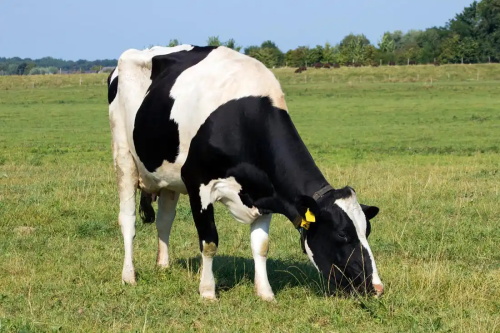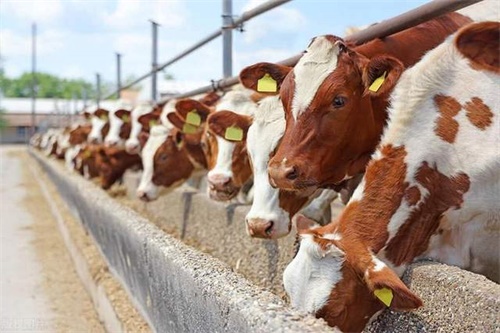As livestock management continues to evolve, one tool has firmly established its place at the intersection of reproduction and nutrition: 動物用超音波検査 pregnancy testing. Globally recognized for its accuracy and non-invasive application, ultrasound scanning offers both breeders and farmers critical insights that help tailor nutritional strategies to the precise needs of pregnant animals. This synergy between diagnostic technology and feed management brings multiple benefits: healthier offspring, optimized feed efficiency, and enhanced economic returns—principles that resonate strongly with livestock professionals around the world.

The Role of Ultrasound in Reproductive Management
Ultrasound technology enables early, accurate pregnancy detection in cattle, 羊, ヤギ, and other livestock species—often as early as 28–30 days post-breeding. Compared to manual palpation, ultrasound is faster, safer, and less stressful for animals. Western veterinary experts emphasize that early detection prevents unnecessary feeding of non-pregnant animals and allows producers to make prompt decisions about rebreeding or culling, reducing wasted resources and time.
かつ, ultrasound can identify multiple pregnancies (e.g., twins) and evaluate fetal viability, offering producers essential information on litter size and health status. This advanced inspection supports well-informed breeding decisions, building a foundation for focused nutritional planning.
Why Nutritional Management Matters During Pregnancy
Pregnancy places unique metabolic demands on livestock. Nutrient needs not only support maternal maintenance but also fetal growth, placental function, and colostrum production. Both undernutrition and overnutrition can lead to significant health and productivity issues:
-
Undernutrition may result in low birth weight, poor neonatal immunity, increased neonatal mortality, and slowed postnatal growth.
-
Overnutrition, especially in later gestation, can predispose offspring to metabolic disorders, reproductive complications, and dystocia.
Western research often highlights the “Goldilocks principle” in pregnancy nutrition: supplies should be just right—not too little, not too much. Reined-in diets during late-gestation and gradual increases postpartum make sense from the perspective of metabolic health.
Linking Pregnancy Status to Tailored Feeding Strategies
Here’s how ultrasound findings guide targeted nutritional programs, reflecting the integration of veterinary science and feed economics:
-
Confirmation of Pregnancy
-
Non-pregnant animals can be quickly returned to a suitable standing herd nutrition ration with no need for more costly gestational diets.
-
Confirmed pregnant animals can be moved to rations specifically formulated for gestation, ensuring optimal intake of protein, エネルギー, micronutrients, and minerals throughout the pregnancy cycle.
-
-
Determination of Fetal Age
Veterinary practitioners can estimate fetal development stage using crown-rump length, skull ossification, and limb formation. Recognizing the specific window of gestation (e.g., first trimester vs. last trimester) allows nutritionists to implement stage-appropriate feeding protocols, such as protein-rich diets during early pregnancy to support cellular proliferation, and energy-dense rations in late pregnancy to fuel fetal growth. -
Identification of Multiple Fetuses
Animals carrying twins or multiples have increased nutritional needs, especially for energy, protein, and minerals like calcium and phosphorus. Ultrasound identification ensures these animals receive tailored, often more concentrated, feed packages to support both fetal loads. -
Fetal Viability Monitoring
Ultrasound can reveal fetal heartbeat and movements, allowing producers to detect non-viable pregnancies and reduce feeding costs for non-productive cows or does. Veterinary advice often suggests early rebreeding or regrouping decisions based on pregnancy viability findings.

Practical Steps in Implementing Ultrasound-Based Nutrition Plans
Drawing on best practices from international veterinary and livestock nutrition fields, here is a refined protocol for integrating ultrasound findings into nutritional management:
-
Scan at ~30 Days Post-Breeding
Use 5–7 MHz transrectal or transabdominal probes to confirm pregnancy status and fetal age. -
Nutritional Grouping
-
Non-pregnant → standard dry ration
-
Early pregnant → maintenance-plus-ruminal-support ration
-
Mid-pregnancy → maintenance + moderate protein/energy increment
-
Late pregnancy → high-energy, high-protein diet enriched with vitamins (ある, D, E) and minerals (Ca, P, Mg, Se, Zn)
-
-
Regular Ultrasonic Monitoring
Additional scans during mid and late pregnancy can track fetal development, allowing adjustments for variations or complications. 例えば, sudden fetal growth retardation can trigger early veterinary or nutritional intervention. -
Transition to Lactation Stage
Six to eight weeks before expected calving, shift to prepartum feeding programs with increased quality forage, rumen buffer, and energy reserves to support impending lactation demands. Western guidelines emphasize high-quality fiber to maintain rumen health during this critical transition. -
Postpartum Follow-up Scans
Although less common, postpartum scans (e.g., 30–60 days after birth) check uterine involution and detect retained placentas or uterine infections, indirectly ensuring animals resume optimal reproductive and nutritional efficiency.
Global Perspectives: Case Examples from Different Regions
北アメリカ:
Large-scale dairy operations in the U.S. frequently use ultrasound scanning in conjunction with Dairy Herd Improvement (DHI) programs. Nutritionists use data-driven protocols to adjust energy and metabolizable protein intake, aiming for calving body condition scores between 3.0–3.5 (on a 5-point scale)—considered ideal for health and milk production.
ヨーロッパ:
In European beef systems, particularly among grass-fed herds in Ireland and the UK, ultrasound is used to optimize feed allocation in pasture- and forage-based systems. Many farms practice winter dry-lot feeding post-diagnosis, followed by pasture re-entry timed for peak lactation nutrition.
Australia and New Zealand:
Given their extensive grazing systems, livestock managers deploy ultrasound as part of seasonal management planning. Early pregnancy scans allow producers to decide whether to feed recipients or donors differently in embryo transfer programs, or to identify cows requiring supplementary feed during lean seasonal conditions.

Economic and Environmental Benefits
Numerous cost-benefit studies from the U.S. and Europe have quantified the advantage of ultrasound-informed management:
-
Reduced feed costs by avoiding premium-rations for non-pregnant animals.
-
Decreased veterinary expenses through early detection of reproductive issues.
-
Increased calf weaning weights, with a 5–10% gain commonly attributed to better maternal nutrition guided by pregnancy knowledge.
-
Lower greenhouse gas footprint per kilogram of calf output, since feed efficiency and reproductive performance improve.
One USDA study noted payback periods as short as one reproduction cycle through strategic grouping, demonstrating that modest investment in ultrasound training and equipment quickly translates to farmer-level profitability.
Challenges and Solutions
Implementing ultrasound-based nutritional strategies isn’t without hurdles:
-
Equipment and training costs: High-quality portable units and technician certification represent upfront investments.
Response: Cost-sharing cooperatives and veterinary services can spread expenses and increase accessibility. -
Data management complexity: Keeping accurate records from scans, feed, and weight gain requires effective record-keeping systems.
Response: Cloud-based tools (e.g., AgriWebb, Herdwatch) simplify decision-making and can be linked to scan schedules. -
Nutritional formulation access: Fine-tuning diets for mid and late pregnancy may require specialized feed mixes.
Response: Commercial premixes and TMR suppliers facilitate customized ration blending, even on smaller farms.
Future Perspectives: Integration with Precision Livestock Farming
Veterinary ultrasound is poised to play a central role in the broader field of precision livestock farming. When linked with:
-
Automated weight scales,
-
Activity trackers,
-
Milk sensors, そして
-
Methane emission monitors,
pregnancy data enriches sophisticated algorithmic feeding recommendations. These systems, increasingly popular in the EU and North American pasture systems, represent the future of individualized feeding—reducing waste, improving welfare, and maximizing production efficiency.
Wide adoption of decision-support platforms depends on reliable baseline data—of which ultrasound-derived pregnancy and fetal assessments are fundamental.
結論
Through the lens of international best practices, veterinary ultrasound pregnancy testing emerges not just as a diagnostic tool, but as a critical enabler of precision nutrition.
-
It allows early pregnancy detection, saving feed and focus for non-pregnant stock.
-
It enables gestation stage–specific feeding, preventing under- and overfeeding.
-
It highlights multiple pregnancies, guiding higher-grade nutrition to match elevated gestational demands.
-
It fosters data-driven management decisions, improving profitability and minimizing environmental costs.
As livestock industries strive to balance efficiency, animal welfare, and sustainability, the fusion of veterinary ultrasound with targeted nutritional management stands as a universally valuable model. From large dairies in North America to pasture-based beef herds in Europe and Australasia, this approach continues to shape more profitable and responsible farming systems worldwide.
References
-
US Department of Agriculture. “Economic Benefits of Reproductive Ultrasonography in Beef Cattle.” (2020).
-
Dr. Sarah Stallings, University of Wisconsin–Madison Extension, “Optimizing Prepartum Nutrition in Dairy Heifers.” (2019).
-
Anonymous Survey, Irish Cattle and Sheep Management 2022.
-
Veterinary Imaging International. “Ultrasound Guide for Small and Food-Scale Livestock.” (2023).
-
AgriWebb. “Precision Livestock: The Role of Ultrasound and Data Integration.” (2024).